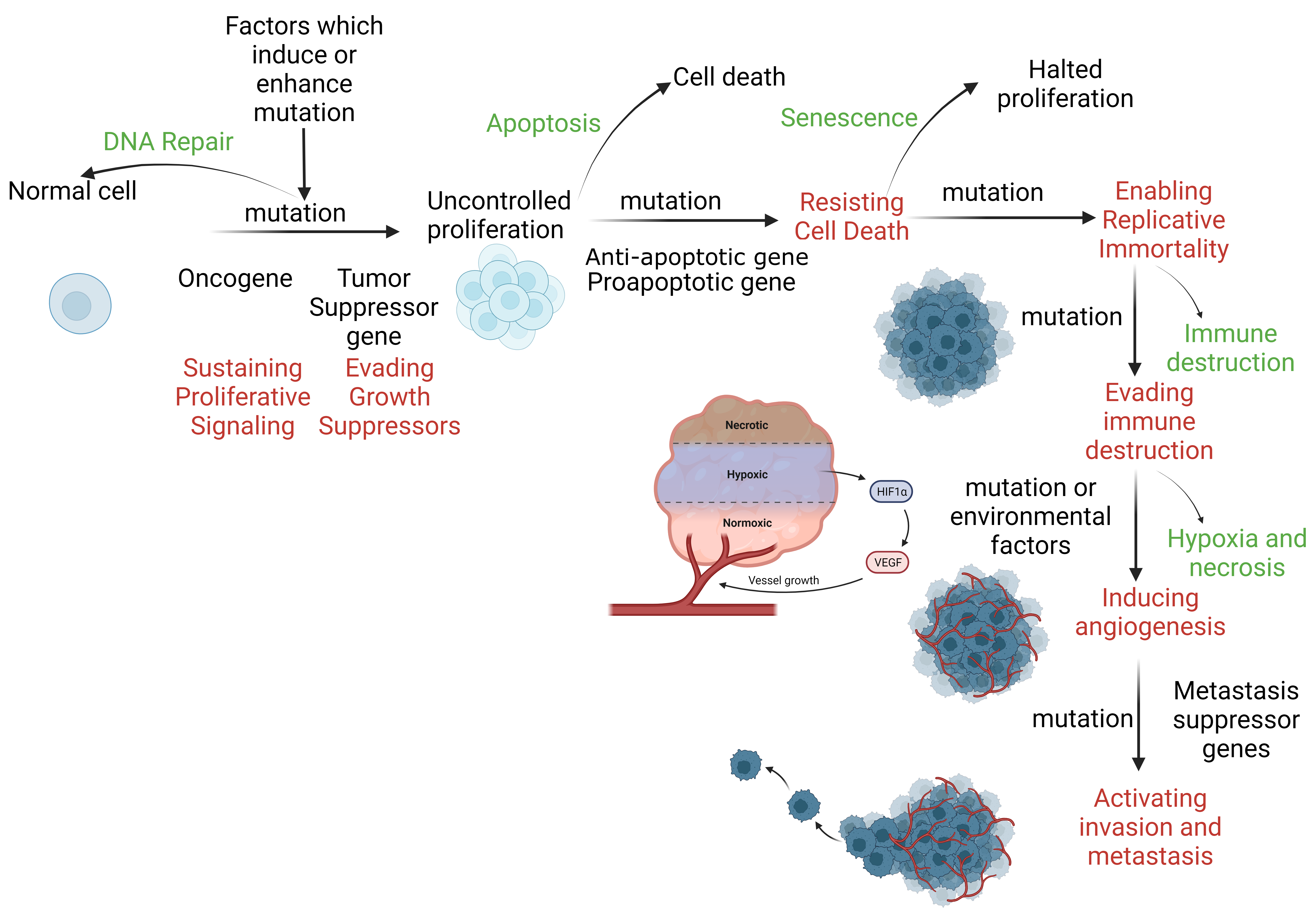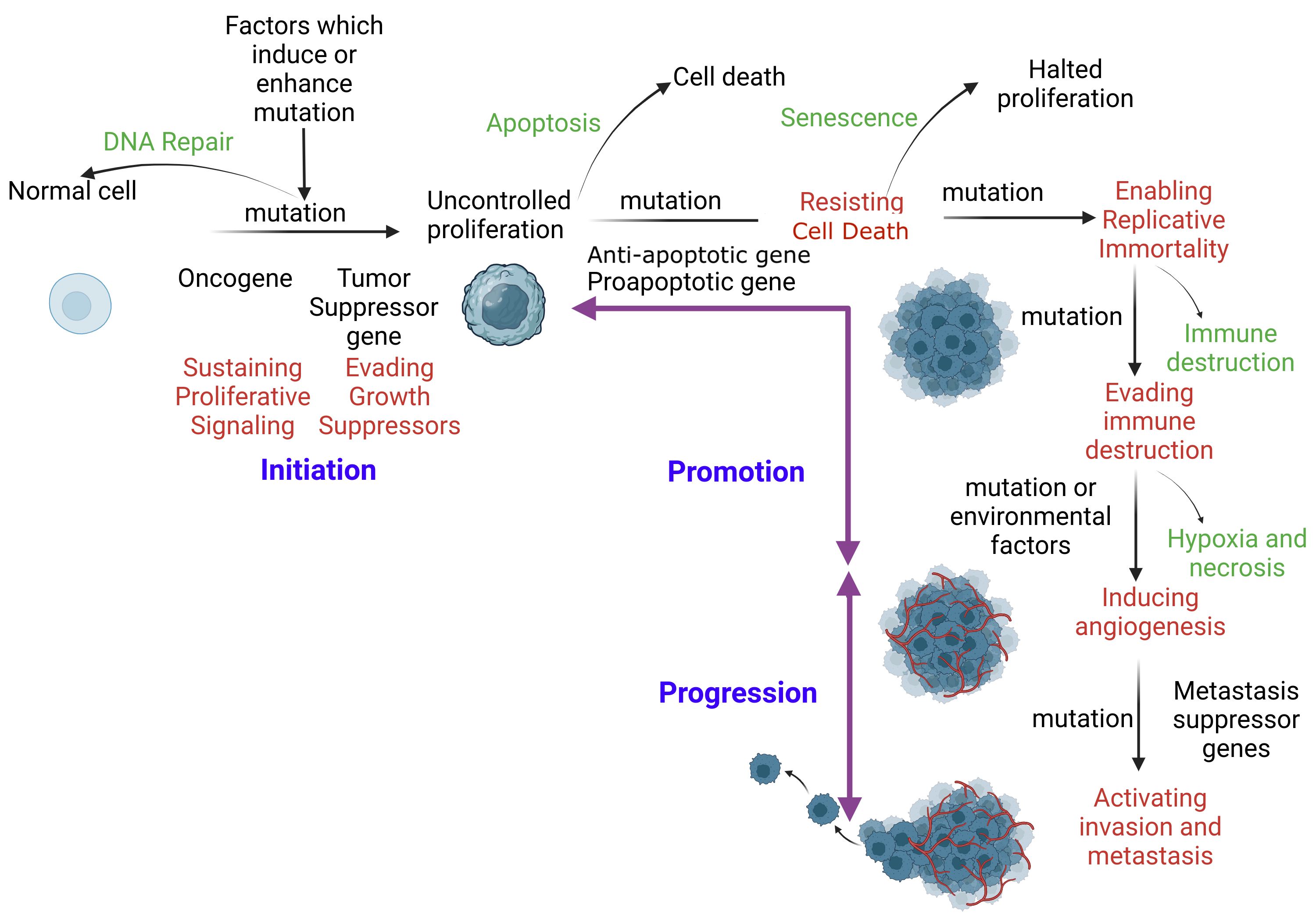[1]
Bertheloot D, Latz E, Franklin BS. Necroptosis, pyroptosis and apoptosis: an intricate game of cell death. Cellular & molecular immunology. 2021 May:18(5):1106-1121. doi: 10.1038/s41423-020-00630-3. Epub 2021 Mar 30
[PubMed PMID: 33785842]
[2]
Ketelut-Carneiro N, Fitzgerald KA. Apoptosis, Pyroptosis, and Necroptosis-Oh My! The Many Ways a Cell Can Die. Journal of molecular biology. 2022 Feb 28:434(4):167378. doi: 10.1016/j.jmb.2021.167378. Epub 2021 Nov 25
[PubMed PMID: 34838807]
[3]
Samir P, Malireddi RKS, Kanneganti TD. The PANoptosome: A Deadly Protein Complex Driving Pyroptosis, Apoptosis, and Necroptosis (PANoptosis). Frontiers in cellular and infection microbiology. 2020:10():238. doi: 10.3389/fcimb.2020.00238. Epub 2020 Jun 3
[PubMed PMID: 32582562]
[4]
Newton K, Strasser A, Kayagaki N, Dixit VM. Cell death. Cell. 2024 Jan 18:187(2):235-256. doi: 10.1016/j.cell.2023.11.044. Epub
[PubMed PMID: 38242081]
[5]
Li M, Wang ZW, Fang LJ, Cheng SQ, Wang X, Liu NF. Programmed cell death in atherosclerosis and vascular calcification. Cell death & disease. 2022 May 18:13(5):467. doi: 10.1038/s41419-022-04923-5. Epub 2022 May 18
[PubMed PMID: 35585052]
[6]
Mirzayans R, Murray D. Do TUNEL and Other Apoptosis Assays Detect Cell Death in Preclinical Studies? International journal of molecular sciences. 2020 Nov 29:21(23):. doi: 10.3390/ijms21239090. Epub 2020 Nov 29
[PubMed PMID: 33260475]
[7]
Sorice M. Crosstalk of Autophagy and Apoptosis. Cells. 2022 Apr 28:11(9):. doi: 10.3390/cells11091479. Epub 2022 Apr 28
[PubMed PMID: 35563785]
[8]
Hu SJ, Jiang SS, Zhang J, Luo D, Yu B, Yang LY, Zhong HH, Yang MW, Liu LY, Hong FF, Yang SL. Effects of apoptosis on liver aging. World journal of clinical cases. 2019 Mar 26:7(6):691-704. doi: 10.12998/wjcc.v7.i6.691. Epub
[PubMed PMID: 30968034]
Level 3 (low-level) evidence
[9]
Nguyen TT, Wei S, Nguyen TH, Jo Y, Zhang Y, Park W, Gariani K, Oh CM, Kim HH, Ha KT, Park KS, Park R, Lee IK, Shong M, Houtkooper RH, Ryu D. Mitochondria-associated programmed cell death as a therapeutic target for age-related disease. Experimental & molecular medicine. 2023 Aug:55(8):1595-1619. doi: 10.1038/s12276-023-01046-5. Epub 2023 Aug 23
[PubMed PMID: 37612409]
[10]
Lee SB, Lee S, Park JY, Lee SY, Kim HS. Induction of p53-Dependent Apoptosis by Prostaglandin A(2). Biomolecules. 2020 Mar 24:10(3):. doi: 10.3390/biom10030492. Epub 2020 Mar 24
[PubMed PMID: 32213959]
[11]
Baena-Lopez LA, Wang L, Wendler F. Cellular stress management by caspases. Current opinion in cell biology. 2024 Feb:86():102314. doi: 10.1016/j.ceb.2023.102314. Epub 2024 Jan 11
[PubMed PMID: 38215516]
Level 3 (low-level) evidence
[12]
Michie J, Kearney CJ, Hawkins ED, Silke J, Oliaro J. The Immuno-Modulatory Effects of Inhibitor of Apoptosis Protein Antagonists in Cancer Immunotherapy. Cells. 2020 Jan 14:9(1):. doi: 10.3390/cells9010207. Epub 2020 Jan 14
[PubMed PMID: 31947615]
[13]
Duarte-Olivenza C, Moran G, Hurle JM, Lorda-Diez CI, Montero JA. Lysosomes, caspase-mediated apoptosis, and cytoplasmic activation of P21, but not cell senescence, participate in a redundant fashion in embryonic morphogenetic cell death. Cell death & disease. 2023 Dec 9:14(12):813. doi: 10.1038/s41419-023-06326-6. Epub 2023 Dec 9
[PubMed PMID: 38071330]
[14]
Nössing C, Ryan KM. 50 years on and still very much alive: 'Apoptosis: a basic biological phenomenon with wide-ranging implications in tissue kinetics'. British journal of cancer. 2023 Feb:128(3):426-431. doi: 10.1038/s41416-022-02020-0. Epub 2022 Nov 11
[PubMed PMID: 36369364]
[15]
Yin S, Ji C, Wu P, Jin C, Qian H. Human umbilical cord mesenchymal stem cells and exosomes: bioactive ways of tissue injury repair. American journal of translational research. 2019:11(3):1230-1240
[PubMed PMID: 30972158]
Level 2 (mid-level) evidence
[16]
Verma R, Verma P, Budhwar S, Singh K. S100 proteins: An emerging cynosure in pregnancy & adverse reproductive outcome. The Indian journal of medical research. 2018 Dec:148(Suppl):S100-S106. doi: 10.4103/ijmr.IJMR_494_18. Epub
[PubMed PMID: 30964086]
[17]
Mehrbod P, Ande SR, Alizadeh J, Rahimizadeh S, Shariati A, Malek H, Hashemi M, Glover KKM, Sher AA, Coombs KM, Ghavami S. The roles of apoptosis, autophagy and unfolded protein response in arbovirus, influenza virus, and HIV infections. Virulence. 2019 Dec:10(1):376-413. doi: 10.1080/21505594.2019.1605803. Epub
[PubMed PMID: 30966844]
[18]
McBride A, Houtmann S, Wilde L, Vigil C, Eischen CM, Kasner M, Palmisiano N. The Role of Inhibition of Apoptosis in Acute Leukemias and Myelodysplastic Syndrome. Frontiers in oncology. 2019:9():192. doi: 10.3389/fonc.2019.00192. Epub 2019 Mar 27
[PubMed PMID: 30972300]
[19]
Çıkla-Süzgün P, Küçükgüzel ŞG. Recent Advances in Apoptosis: THE Role of Hydrazones. Mini reviews in medicinal chemistry. 2019:19(17):1427-1442. doi: 10.2174/1389557519666190410125910. Epub
[PubMed PMID: 30968776]
Level 3 (low-level) evidence
[20]
Angelousi A, Kassi E, Ansari-Nasiri N, Randeva H, Kaltsas G, Chrousos G. Clock genes and cancer development in particular in endocrine tissues. Endocrine-related cancer. 2019 Jun:26(6):R305-R317. doi: 10.1530/ERC-19-0094. Epub
[PubMed PMID: 30959483]
[21]
Kabra UD, Jastroch M. Mitochondrial Dynamics and Insulin Secretion. International journal of molecular sciences. 2023 Sep 7:24(18):. doi: 10.3390/ijms241813782. Epub 2023 Sep 7
[PubMed PMID: 37762083]
[22]
Ge ZD, Lian Q, Mao X, Xia Z. Current Status and Challenges of NRF2 as a Potential Therapeutic Target for Diabetic Cardiomyopathy. International heart journal. 2019 May 30:60(3):512-520. doi: 10.1536/ihj.18-476. Epub 2019 Apr 10
[PubMed PMID: 30971629]
[23]
D'Addio F, Montefusco L, Lunati ME, Pastore I, Assi E, Petrazzuolo A, Marin V, Bruckmann C, Fiorina P. Targeting a novel apoptotic pathway in human disease. BioEssays : news and reviews in molecular, cellular and developmental biology. 2023 Jun:45(6):e2200231. doi: 10.1002/bies.202200231. Epub 2023 Mar 30
[PubMed PMID: 36998110]

